Solid Circulating Velocity Measurement in a Liquid–Solid Micro-Circulating Fluidised Bed
Abstract
:1. Introduction
2. Experimental Details
2.1. Experimental Set up
2.2. Particle and Liquid Materials
2.3. Experimental Methodology
3. Results and Discussion
3.1. Solid Circulation Rate by Accumulation Method as Validation Experiments
3.2. Influence of Liquid Flow Rate on Solid Circulating Velocity
3.3. Influence of Solid Inventory in the System
3.4. Effect of Particle Size
4. Conclusions
Author Contributions
Funding
Conflicts of Interest
Nomenclature
| a | Constant |
| Ad | Downcomer cross-sectional area (m) |
| Ar | Riser Cross sectional area (m) |
| dp | Particle diameter (m) |
| g | gravitational acceleration (m/s2) |
| Gs | Solid circulation rate (kgm2 s) |
| H | bed height (m) |
| Ua | Transport transition velocity (m/s) |
| Ucr | critical transition velocity (m/s) |
| Ul | superficial liquid velocity (m/s) |
| Ulc | critical liquid velocity from zone 1 to zone 2 (m/s) |
| Ucr/Ut | normalised critical transition velocity (m/s) |
| Ulm | Maximum liquid velocity (m/s) |
| Us | solid circulating velocity (m/s) |
| Usm | maximum solid circulating velocity |
| Ut | Particle terminal Velocity (m/s) |
| µ | liquid viscosity (Pa.s) |
| ρf | fluid density (kg/m3) |
| ρp | particle density (kg/m3) |
References
- Gnanasundaram, N.; Loganathan, M.; Perumal, K. Solid holdup in liquid solid circulating fluidized bed with viscous liquid medium. Alex. Eng. J. 2014, 53, 959–968. [Google Scholar] [CrossRef] [Green Version]
- Vidyasagar, S.; Krishnaiah, K.; Sai, P.S.T. Macroscopic properties of liquid-solid circulating fluidized bed with viscous liquid medium. Chem. Eng. Process. Process Intensif. 2011, 50, 42–52. [Google Scholar] [CrossRef]
- Liang, W.; Yu, Z.; Jin, Y.; Wang, Z.; Wang, Y.; He, M.; Min, E. Synthesis of linear alkylbenzene in a liquid–solid circulating fluidized bed reactor. J. Chem. Technol. Biotechnol. 1995, 62, 98–102. [Google Scholar] [CrossRef]
- Natarajan, P.; Velraj, R.; Seeniraj, R.V. Hydrodynamic similarity in liquid–solid circulating fluidized bed risers. Powder Technol. 2014, 264, 166–176. [Google Scholar] [CrossRef]
- Potic, B.; Kersten, S.; Ye, M.; Van Der Hoef, M.; Kuipers, J.; Van Swaaij, W. Fluidization with hot compressed water in micro-reactors. Chem. Eng. Sci. 2005, 60, 5982–5990. [Google Scholar] [CrossRef]
- Zivkovic, V.; Biggs, M.J.; Alwahabi, Z.T. Experimental study of a liquid fluidization in a microfluidic channel. AIChE J. 2013, 59, 361–364. [Google Scholar] [CrossRef] [Green Version]
- Do Nascimento, O.L.; Reay, D.A.; Zivkovic, V. Influence of surface forces and wall effects on the minimum fluidization velocity of liquid-solid micro-fluidized beds. Powder Technol. 2016, 304, 55–62. [Google Scholar] [CrossRef]
- Wang, F.; Hu, E.; Geng, S.; Yue, J.; Tang, S.; Cui, Y.; Yu, J.; Xu, G. Distinctive Hydrodynamics of a Micro Fluidized Bed and Its Application to Gas–Solid Reaction Analysis. Energy Fuels 2018, 32, 4096–4106. [Google Scholar] [CrossRef]
- Geng, S.; Yu, J.; Zhang, J.; Guo, H.; Yue, J.; Xu, G. Gas back-mixing in micro fluidized beds. Chem. Eng. J. 2013, 64, 867–876. [Google Scholar]
- Wang, F.; Fan, L.-S. Gas-Solid Fluidization in Mini-and Micro-channels. Ind. Eng. Chem. Res. 2011, 50, 4741–4751. [Google Scholar] [CrossRef]
- Wang, H.; Mustaffar, A.; Phan, A.N.; Zivkovic, V.; Reay, D.A.; Law, R.; Boodhoo, K. A review of process intensification applied to solids handling. Chem. Eng. Process. Process Intensif. 2017, 118, 78–107. [Google Scholar] [CrossRef]
- Doroodchi, E.; Peng, Z.; Sathe, M.; Abbasi-Shavazi, E.; Evans, G.M. Fluidisation and packed bed behaviour in capillary tubes. Powder Technol. 2012, 223, 131–136. [Google Scholar] [CrossRef]
- Hessel, V.; Kralisch, D.; Kockmann, N. Novel Process Windows: Innovative Gates to Intensified and Sustainable Chemical Processes; John Wiley & Sons: Hoboken, NJ, USA, 2014. [Google Scholar]
- Reay, D.; Ramshaw, C.; Harvey, A. Process Intensification: Engineering for Efficiency, Sustainability and Flexibility; Butterworth-Heinemann: Oxford, UK, 2013. [Google Scholar]
- McDonough, J.R.; Law, R.; Reay, D.A.; Zivkovic, V. Intensified carbon capture using adsorption: Heat transfer challenges and potential solutions. Therm. Sci. Eng. Prog. 2018, 8, 17–30. [Google Scholar] [CrossRef] [Green Version]
- Kivikero, N.; Murtomaa, M.; Antikainen, O.; Hatara, J.; Juppo, A.-M.; Sandler, N. Rapid formulation screening with a Multipart Microscale Fluid bed Powder processor. Pharm. Dev. Technol. 2011, 16, 358–366. [Google Scholar] [CrossRef]
- Zeng, X.; Wang, F.; Han, J.; Zhang, J.; Liu, Y.; Wang, Y.; Yu, J.; Xu, G. Micro fluidized bed reaction analysis and its application to coal char gasification kinetics. CIESC J. 2013, 1, 289. [Google Scholar]
- Yu, J.; Zhu, J.-H.; Guo, F.; Duan, Z.-K.; Liu, Y.; Xu, G. Reaction kinetics and mechanism of biomass pylolysis in a micro-fluidized bed reactor. J. Fuel Chem. Technol. 2010, 38, 666–672. [Google Scholar] [CrossRef]
- Chavan, P.V.; Kalaga, D.V.; Joshi, J.B. Solid-Liquid Circulating Multistage Fluidized Bed: Hydrodynamic Study. Ind. Eng. Chem. Res. 2009, 48, 4592–4602. [Google Scholar] [CrossRef]
- Liang, W.; Zhang, S.; Zhu, J.; Jin, Y.; Yu, Z.; Wang, Z. Flow characteristics of the liquid–solid circulating fluidized bed. Powder Technol. 1997, 90, 95–102. [Google Scholar] [CrossRef]
- Zheng, Y.; Zhu, J.; Wen, J.; Martin, S.A.; Bassi, A.S.; Margaritis, A. The axial hydrodynamic behavior in a liquid-solid circulating fluidized bed. Can. J. Chem. Eng. 1999, 77, 284–290. [Google Scholar] [CrossRef]
- Vidyasagar, S.; Krishnaiah, K.; Sai, P.S.T. Hydrodynamics of a liquid–solid circulating fluidized bed: Effect of dynamic leak. Chem. Eng. J. 2008, 138, 425–435. [Google Scholar] [CrossRef]
- Natarajan, P.; Velraj, R.; Seeniraj, R.V. Effect of various parameters on the solid circulation rate in a liquid–solid circulating fluidized bed. Asia-Pac. J. Chem. Eng. 2008, 3, 459–470. [Google Scholar] [CrossRef]
- Cho, Y.; Song, P.S.; Lee, C.G.; Kang, Y.; Kim, S.D.; Fan, L.T. Liquid radial dispersion in liquid-solid circulating fluidized beds with viscous liquid medium. Chem. Eng. Commun. 2005, 192, 257–271. [Google Scholar] [CrossRef]
- Roy, S.; Kemoun, A.; Al-Dahhan, M.; Dudukovic, M. A method for estimating the solids circulation rate in a closed-loop circulating fluidized bed. Powder Technol. 2001, 121, 213–222. [Google Scholar] [CrossRef]
- Hensler, T.; Firsching, M.; Bonilla, J.S.G.; Wörlein, T.; Uhlmann, N.; Wirth, K.-E. Non-invasive investigation of the cross-sectional solids distribution in CFB risers by X-ray computed tomography. Powder Technol. 2016, 297, 247–258. [Google Scholar] [CrossRef]
- Wu, W.; Gerhart, A.L.; Chen, Z.; A Dellenback, P.; Agarwal, P.K. A device for measuring solids flowrate in a circulating fluidized bed. Powder Technol. 2001, 120, 151–158. [Google Scholar] [CrossRef]
- Masuda, H.; Iinoya, K. Electrification of particles by impact on inclined metal plates. AIChE J. 1978, 24, 950–956. [Google Scholar] [CrossRef]
- Rahman, M.H.; Bi, X.; Grace, J.R.; Lim, C.J. Measurement of solids circulation rate in a high-temperature dual fluidized bed pilot plant. Powder Technol. 2017, 316, 658–669. [Google Scholar] [CrossRef]
- Guío-Pérez, D.C.; Dietrich, F.; Cala, J.N.F.; Pröll, T.; Hofbauer, H. Estimation of solids circulation rate through magnetic tracer tests. Powder Technol. 2017, 316, 650–657. [Google Scholar] [CrossRef]
- Do Nascimento, O.L.; Reay, D.; Zivkovic, V. Study of Transitional Velocities of Solid–Liquid Micro-circulating Fluidized Beds by Visual Observation. J. Chem. Eng. Jpn. 2018, 51, 349–355. [Google Scholar] [CrossRef] [Green Version]
- Jensen, K.F. Microreaction engineering—Is small better? Chem. Eng. Sci. 2001, 56, 293–303. [Google Scholar] [CrossRef]
- Yang, W.-C. Handbook of Fluidization and Fluid-Particle Systems; CRC Press: Boca Raton, FL, USA, 2003. [Google Scholar]
- Mills, P.L.; Quiram, D.J.; Ryley, J.F. Microreactor technology and process miniaturization for catalytic reactions—A perspective on recent developments and emerging technologies. Chem. Eng. Sci. 2007, 62, 6992–7010. [Google Scholar] [CrossRef]
- Dietrich, F.; Tondl, G.; Wöss, D.; Pröll, T.; Hofbauer, H. Comparison of Four Different Methods for Measuring the Solids Circulation Rate in Circulating Fluidized Beds. In Proceedings of the 14th International Conference on Fluidization—From Fundamentals to Products, Noordwijkerhout, The Netherlands, 26–31 May 2013. [Google Scholar]
- Tebianian, S.; Dubrawski, K.; Ellis, N.; Cocco, R.A.; Hays, R.; Karri, S.R.; Leadbeater, T.; Parker, D.J.; Chaouki, J.; Jafari, R.; et al. Investigation of particle velocity in FCC gas-fluidized beds based on different measurement techniques. Chem. Eng. Sci. 2015, 127, 310–322. [Google Scholar] [CrossRef] [Green Version]
- Sarno, L.; Papa, M.N.; Tai, Y.C.; Carravetta, A.; Martino, R. A reliable PIV approach for measuring velocity profiles of highly sheared granular flows. In Proceedings of the 7th International Conference on Engineering Mechanics Structures, Engineering Geology, Salerno, Italy, 3–5 June 2014. [Google Scholar]
- Thielicke, W.; Stamhuis, E. PIVlab–towards user-friendly, affordable and accurate digital particle image velocimetry in MATLAB. J. Open Res. Softw. 2014, 2, 1202. [Google Scholar] [CrossRef] [Green Version]
- McDonough, J.; Law, R.; Kraemer, J.; Harvey, A. Effect of geometrical parameters on flow-switching frequencies in 3D printed fluidic oscillators containing different liquids. Chem. Eng. Res. Des. 2017, 117, 228–239. [Google Scholar] [CrossRef] [Green Version]
- McDonough, J.; Law, R.; Reay, D.; Zivkovic, V. Fluidization in small-scale gas-solid 3D-printed fluidized beds. Chem. Eng. Sci. 2019, 200, 294–309. [Google Scholar] [CrossRef]
- McDonough, J.R.; Law, R.; Reay, D.A.; Groszek, D.; Zivkovic, V. Miniaturisation of the toroidal fluidization concept using 3D printing. Chem. Eng. Res. Des. 2020, 160, 129–140. [Google Scholar] [CrossRef]
- Chen, C.; Mehl, B.T.; Munshi, A.S.; Townsend, A.D.; Spence, D.M.; Martin, R.S. 3D-printed microfluidic devices: Fabrication, advantages and limitations—A mini review. Anal. Methods 2016, 8, 6005–6012. [Google Scholar] [CrossRef]
- Waheed, S.; Cabot, J.M.; Macdonald, N.P.; Lewis, T.W.; Guijt, R.M.; Paull, B.; Breadmore, M.C. 3D printed microfluidic devices: Enablers and barriers. Lab Chip 2016, 16, 1993–2013. [Google Scholar] [CrossRef] [Green Version]
- McDonough, J.R. A perspective on the current and future roles of additive manufacturing in process engineering, with an emphasis on heat transfer. Therm. Sci. Eng. Prog. 2020, 19, 100594. [Google Scholar] [CrossRef]
- Au, A.K.; Huynh, W.; Horowitz, L.F.; Folch, A. 3D-printed microfluidics. Angew. Chem. Int. Ed. 2016, 55, 3862–3881. [Google Scholar] [CrossRef]
- Ho, C.M.B.; Ng, S.H.; Li, K.H.; Yoon, Y.-J. 3D printed microfluidics for biological applications. Lab Chip 2015, 15, 3627–3637. [Google Scholar] [CrossRef] [PubMed]
- Schneider, C.A.; Rasband, W.S.; Eliceiri, K.W. NIH Image to ImageJ: 25 years of image analysis. Nat. Methods 2012, 9, 671–675. [Google Scholar] [CrossRef] [PubMed]
- Keane, R.D.; Adrian, R.J. Theory of cross-correlation analysis of PIV images. Appl. Sci. Res. 1992, 49, 191–215. [Google Scholar] [CrossRef]
- Nirmala, G.S.; Muruganandam, L. An Experimental Study of Liquid-Solid Flow in a Circulating Fluidized Bed of Varying Liquid Viscosity. J. Appl. Fluid Mech. 2015, 8, 95–101. [Google Scholar]
- Natarajan, P.; Velraj, R.; Seeniraj, R. Studies on Regime Transition, Operating Range and System Stability in a Liquid-Solid Circulating Fluidized Bed. Chem. Eng. Technol. Ind. Chem. Plant Equip. Process Eng. Biotechnol. 2009, 32, 572–579. [Google Scholar] [CrossRef]
- Zheng, Y.; Zhu, J.X. The onset velocity of a liquid-solid circulating fluidized bed. Powder Technol. 2001, 114, 244–251. [Google Scholar] [CrossRef]
- Zheng, Y.; Zhu, J.-X. Overall pressure balance and system stability in a liquid-solid circulating fluidized bed. Chem. Eng. J. 2000, 79, 145–153. [Google Scholar] [CrossRef]

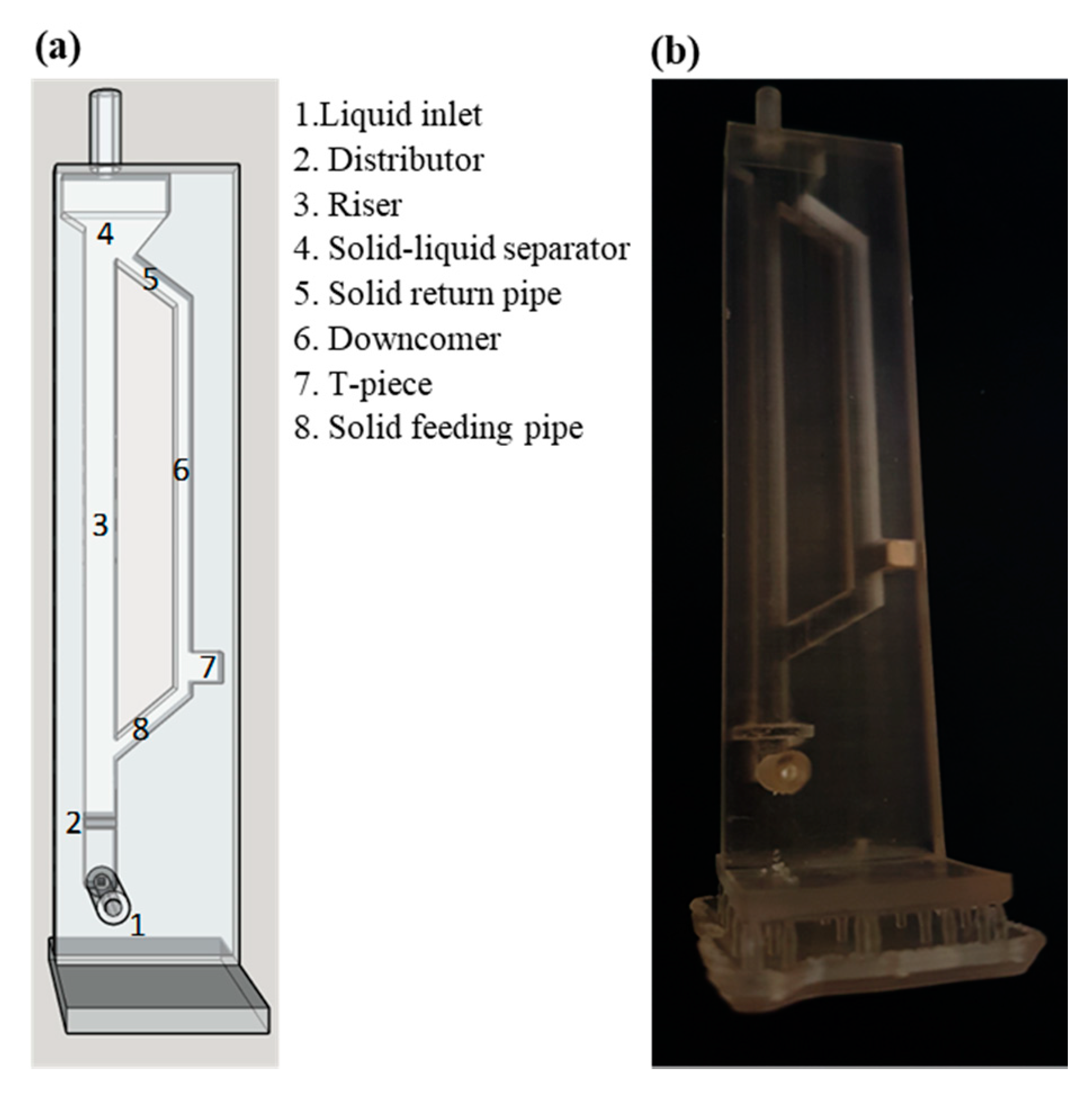
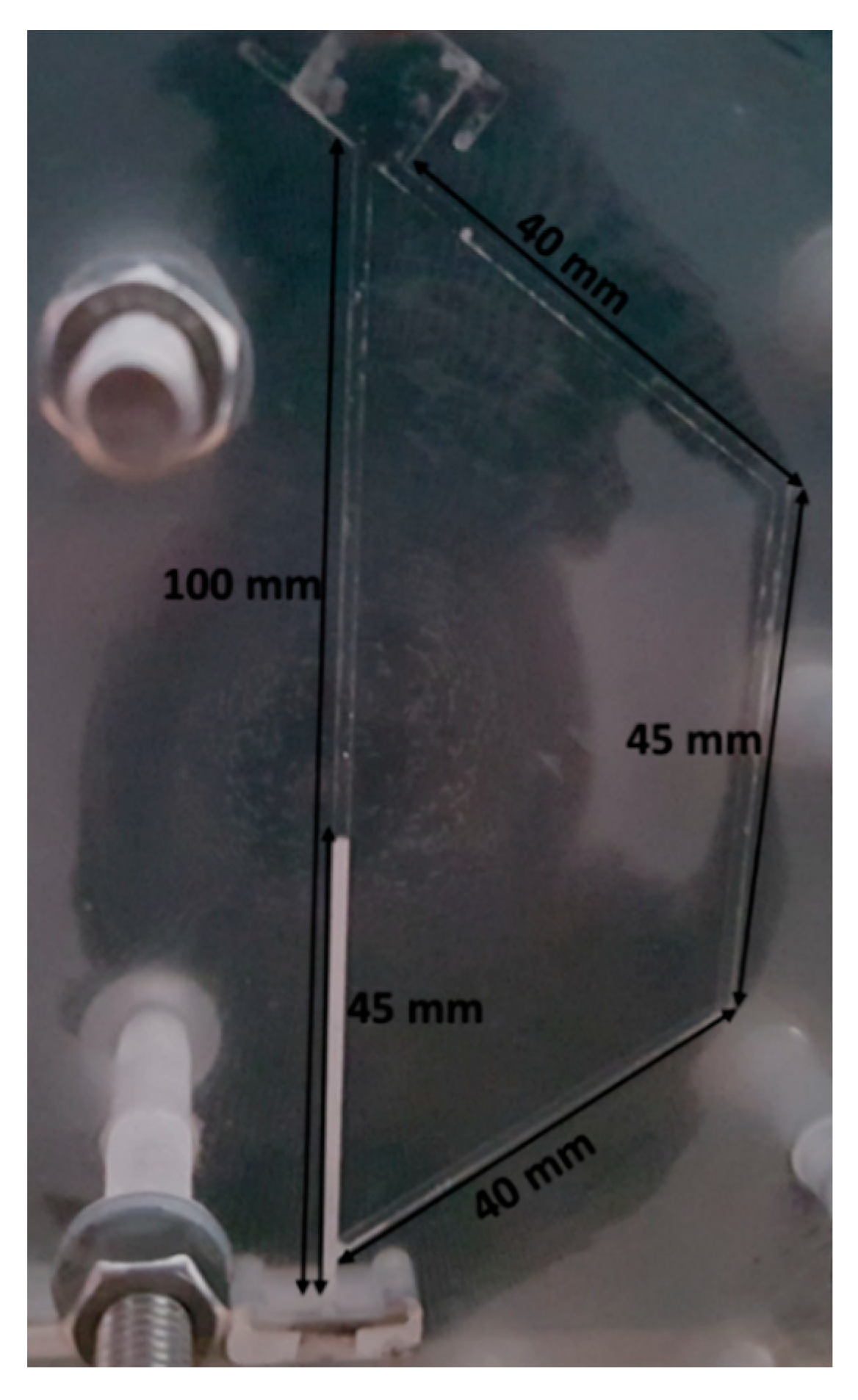
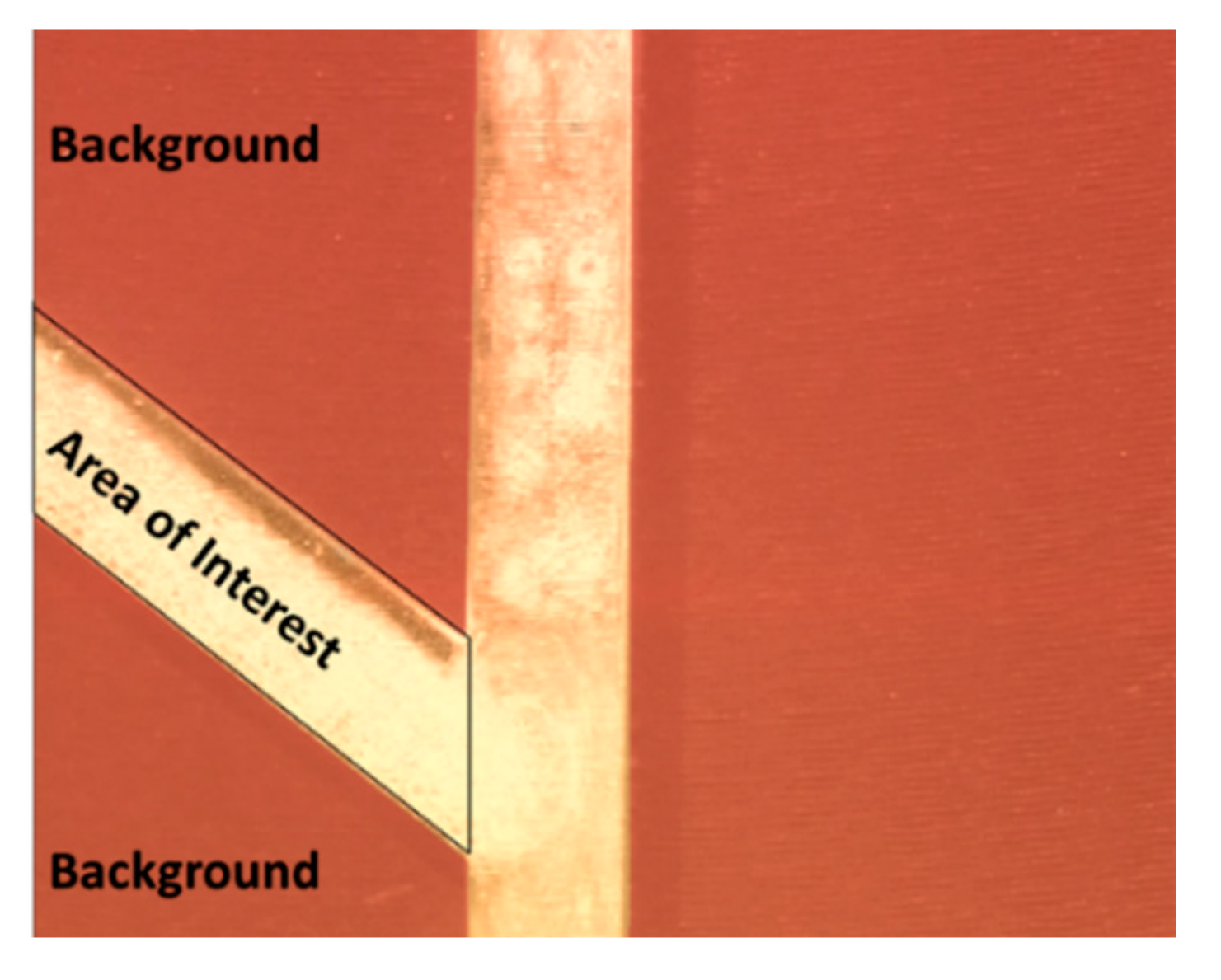

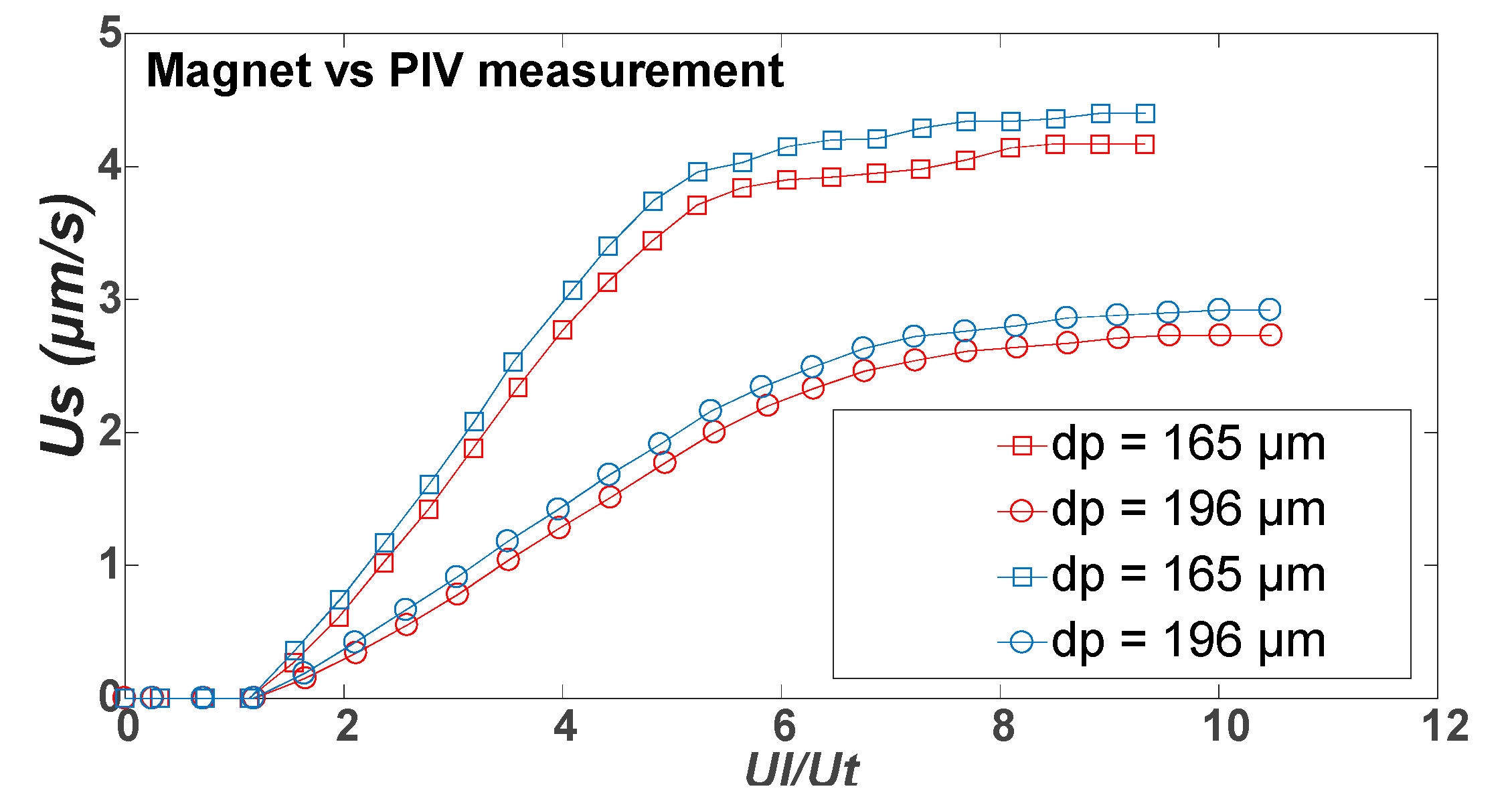
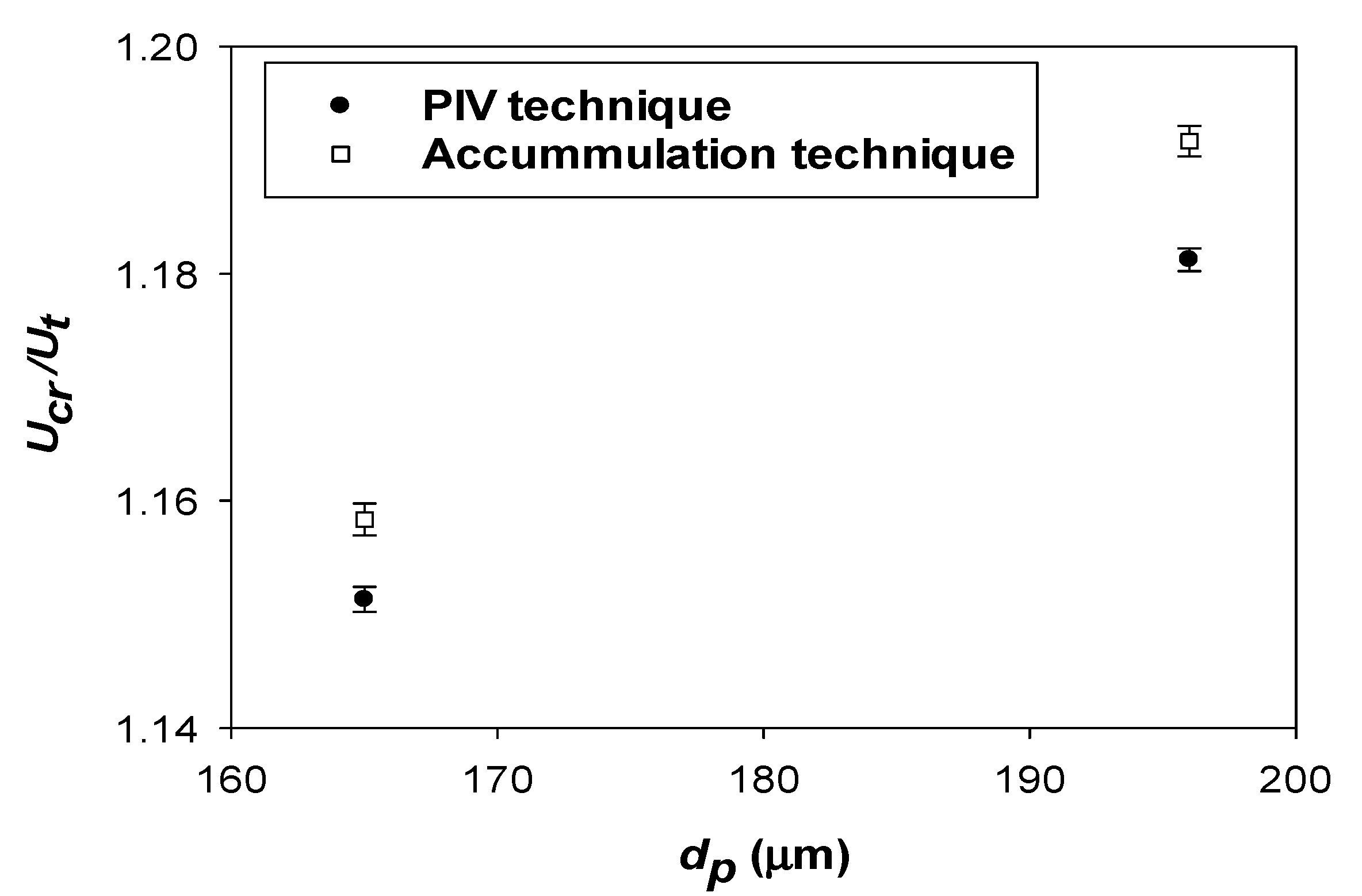
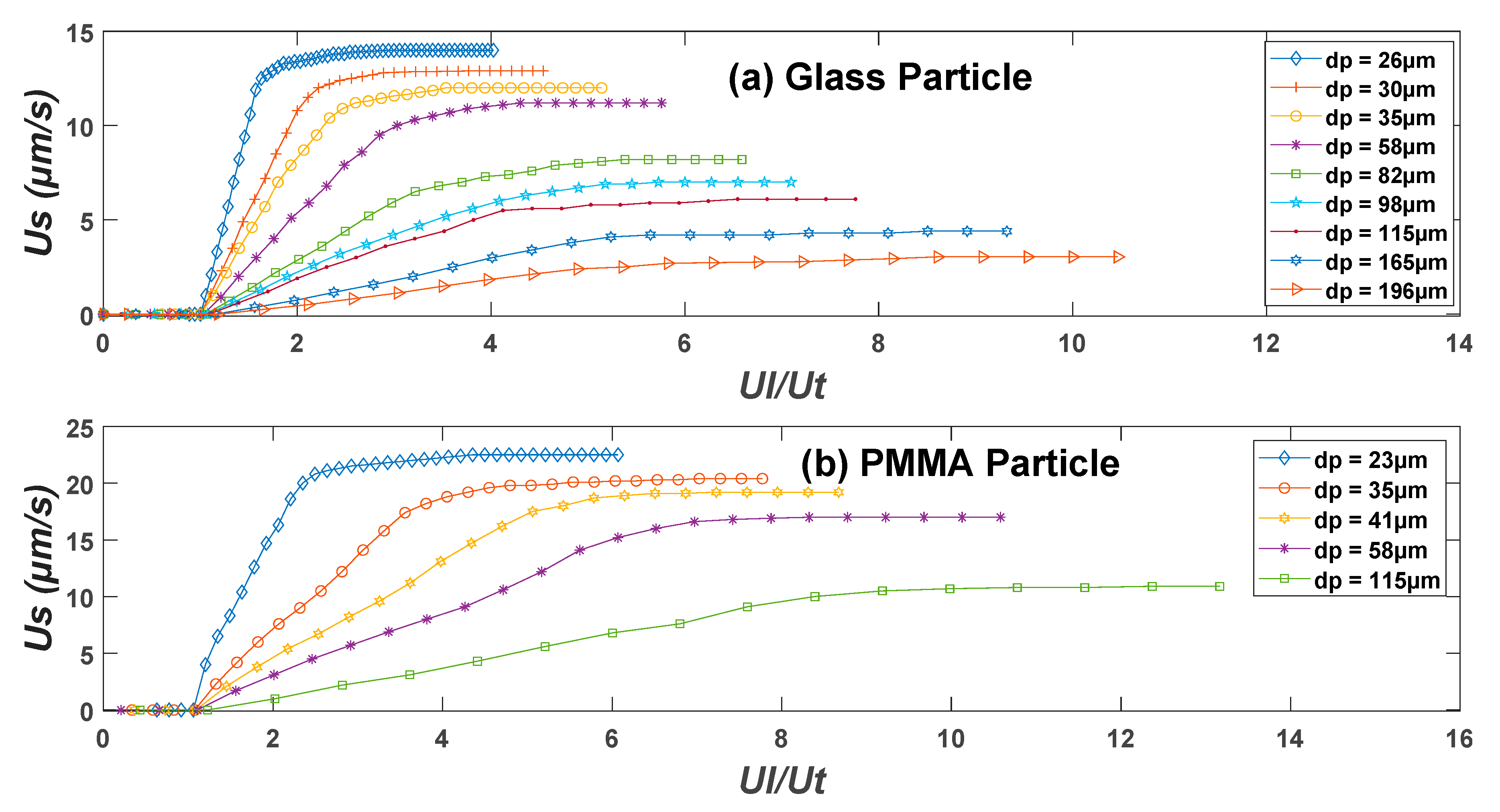




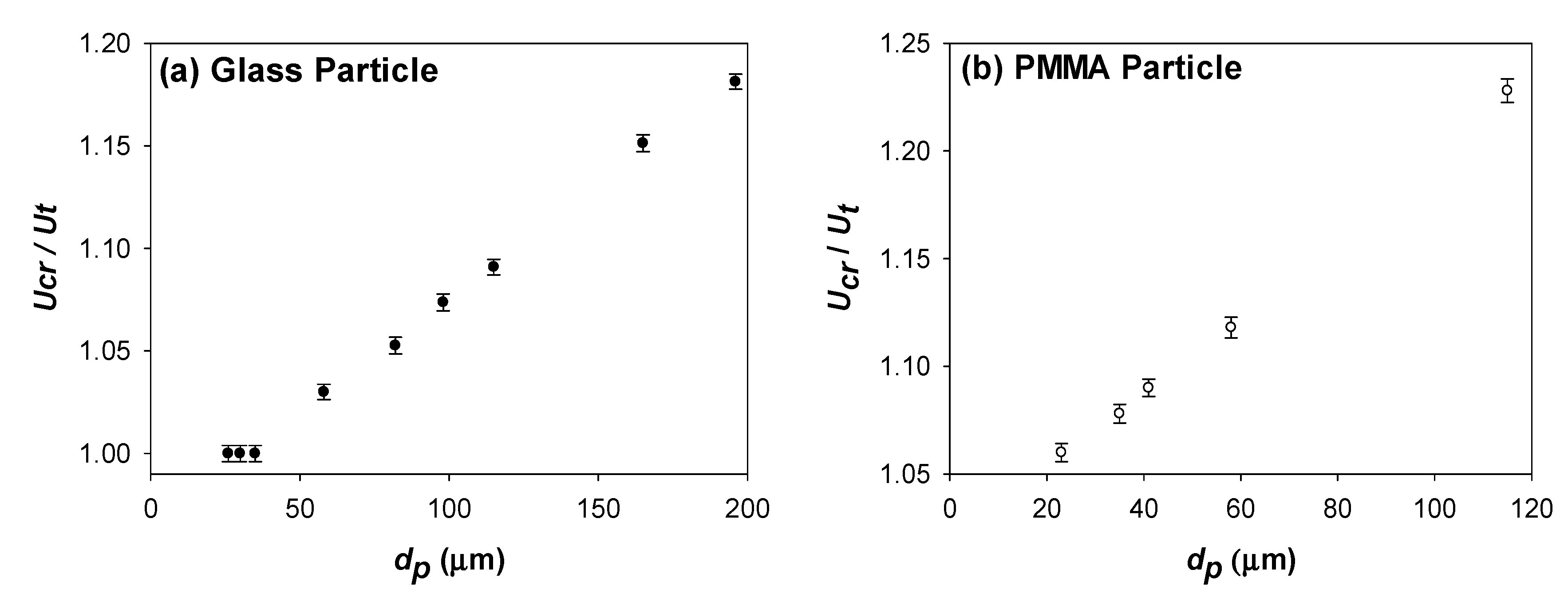

| Printer | Form2 | MiiCraft+ |
|---|---|---|
| Printing type | SLA | DLP |
| Maker | FormLabs | MiiCraft |
| Build size (mm) | 145 × 145 × 175 | 43 × 27 × 180 |
| XY resolution (µm) | 150 | 56 |
| Z-axis resolution (µm) | 25–100 | 30–100 |
© 2020 by the authors. Licensee MDPI, Basel, Switzerland. This article is an open access article distributed under the terms and conditions of the Creative Commons Attribution (CC BY) license (http://creativecommons.org/licenses/by/4.0/).
Share and Cite
do Nascimento, O.L.; Reay, D.A.; Zivkovic, V. Solid Circulating Velocity Measurement in a Liquid–Solid Micro-Circulating Fluidised Bed. Processes 2020, 8, 1159. https://doi.org/10.3390/pr8091159
do Nascimento OL, Reay DA, Zivkovic V. Solid Circulating Velocity Measurement in a Liquid–Solid Micro-Circulating Fluidised Bed. Processes. 2020; 8(9):1159. https://doi.org/10.3390/pr8091159
Chicago/Turabian Styledo Nascimento, Orlando L., David A. Reay, and Vladimir Zivkovic. 2020. "Solid Circulating Velocity Measurement in a Liquid–Solid Micro-Circulating Fluidised Bed" Processes 8, no. 9: 1159. https://doi.org/10.3390/pr8091159
APA Styledo Nascimento, O. L., Reay, D. A., & Zivkovic, V. (2020). Solid Circulating Velocity Measurement in a Liquid–Solid Micro-Circulating Fluidised Bed. Processes, 8(9), 1159. https://doi.org/10.3390/pr8091159





